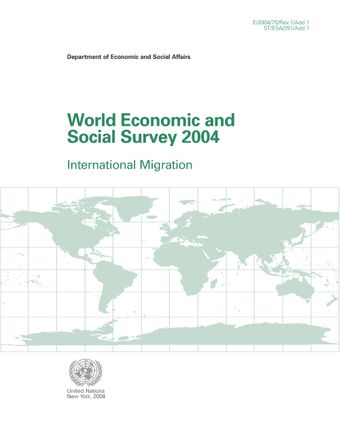International migration trends

- Author: United Nations
- Main Title: World Economic and Social Survey 2004 , pp 23-67
- Publication Date: April 2004
- DOI: https://doi.org/10.18356/82f1e761-en
- Language: English
The major transatlantic migration flows originating in Europe were first disrupted by the First World War and then dampened by the Great Depression. Although data are sparse, international migration worldwide seems to have reached a low point during the 1930s. International migration increased during the Second World War, as the German Reich mobilized millions of people to serve as slave labour in German factories and millions more were displaced or forcefully relocated in Europe, the Union of Soviet Socialist Republics (USSR) and Asia as a result of the War. At the end of the War, there were from 7 million to 8 million foreign civilian workers and prisoners of war working for the Reich (Potts, 1990) and 1.9 million Koreans who had been forced to move to and work in Japan.
-
From This Site
/content/books/9789210474863c005dcterms_title,dcterms_subject,pub_keyword-contentType:Journal -contentType:Contributor -contentType:Concept -contentType:Institution105



